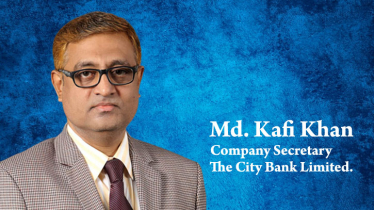
Photo : Messenger
Bangladesh can be transformed from one of the most vulnerable countries to the effects of climate change to one of the most resilient countries by achieving adaptive adaptation. This country can transform itself into a frontrunner one in achieving the SDGs Climate change has become one of the most discussed issues in the world today. The causes and effects of climate change are constantly worrying the whole world. As a result of this, the challenge of the habitability of human civilization and biodiversity on earth and the risks of environmental disasters have been created. Needless to say, most of these adverse environmental hazards arising from climate change are man-made. Contextualizing our adaptation to a changing climate is now the most important issue.
Finding ways to adapt to climate change can focus on the following discussion. Adaptation in simple language is the organisational, physical and behavioral changes of the organism with the change of the environment to adapt and adapt itself to the environment and to protect its existence and reproduction. Adaptation science has so far identified three stages of adaptation to climate change. The first step is to assess the potential adverse effects of climate change and verify whether we are actually doing things that make us more vulnerable to those effects. If so, then we need to stop trying to expose ourselves to more risk.
The second stage of adaptation is to create a propensity to invest in long-term infrastructure. As part of this, bridges, roads, airports and seaports need to be considered to make them resilient to climate change in the future. It is now being considered for investment in all major infrastructure projects around the world. We have to consider it in Bangladesh too.
The third stage of adaptation is called transformational adaptation, which is still somewhat theoretical. There are no notable precedents yet. This applies not only to addressing the risks of climate change impacts, but also to achieving better outcomes in adaptation. Bangladesh formulated the National Adaptation Plan Roadmap in 2015. LDCs, including Bangladesh, have indeed made considerable progress in the context of climate change towards achieving transformative adaptation. We have already gained some lessons and experience in making adaptation more effective.
The first lesson from that experience is that it will take a decade or more to achieve truly transformative adaptation. Therefore, short- and medium-term project-based investments will not be suitable for use in this case. This is a problem for the use of global funds, such as the Green Climate Fund (GCF), which only finance projects. If they want to support transformative adaptation programs to combat climate change, they need to fund long-term programmatic national programs.
The second lesson is to engage relevant stakeholders including government and non-government especially the private sector. That is, moving to a society-wide perspective rather than just a government perspective. Any truly transformative change must involve all relevant stakeholders in each country. The third most important lesson is that the scale of transformative change must be nationwide. It will not be confined to any small region or sector. Therefore, these countries need to think and plan to achieve transformative adaptation only at the national level.
Not at sector level at all. At the recent meeting of Least Developed Countries (LDC) Ministers held in Addis Ababa, Ethiopia on 17 October 2011, an important decision was taken to seek transition from LDC status by achieving adaptive adaptation to climate change and achieving climate resilience. Bangladesh Climate Change Strategy and Action Plan (BCCSAP) was formulated in 2008. It was revised in 2009. Bangladesh is the first country, which has done this. After fourteen years it now needs to be updated by indigenous experts on the basis of public participation. Then Bangladesh will see a very important revision of climate change strategy and action plan.
It needs to be extended till 2030. Emphasis should be placed on mainstreaming climate change into all national plans. It needs to include an important goal to achieve transformational adaptation to make Bangladesh a climate resilient country. This goal needs to be achieved through a whole-of-society approach, linking climate change adaptation to the Delta Plan with the SDGs and the country's eighth and ninth five-year plans. The Delta Plan also needs to be implemented through a public opinion process.
Here is an example of what transformational adaptation might look like. We need to invest in a few cities away from the coast to consider and prepare for the inevitable displacement of millions of people from coastal districts. So that they become climate resilient and migrant friendly cities that can accommodate at least 1 lakh migrants. Young children in coastal areas should be educated. They need to be made skilled so that they can work well-paid in the cities instead of becoming farmers and fishermen like their parents.
This strategy will reduce the pressure on the capital Dhaka. This metropolis cannot accommodate another 10 million climate migrants in the next decade. It will make Bangladesh an example of transformative adaptation and succeed in building the adaptive capacity of all our young and future citizens. In 2013, Bangladesh established the Climate Trust Fund in its own budget. More than 3 thousand crore rupees have already been allocated to various climate programs from this fund. In addition, the United Kingdom and some other countries have created the Climate Resilient Fund with the help of development partners. Now the national budget allocation should be increased to deal with climate change. Programs should be taken up on priority basis in more vulnerable areas.
Allotment should be given to climate risk districts. There is an urgent need to build capacity and capacity to formulate and manage adaptation and mitigation programs to receive funding from the Green Climate Fund, Adaptation Fund, LDC Fund and other global funds. Research and knowledge-based decision-making activities need to be initiated on an urgent basis. MPhil and PhD programmes in this regard should be started in the universities as soon as possible.
Bangladesh can be transformed from one of the most vulnerable countries to the effects of climate change to one of the most resilient countries by achieving adaptive adaptation. This country can transform itself into a frontrunner one in achieving the Sustainable Development Goals (SDGs) as well as achieving the Millennium Development Goals (MDGs). It can lead the world as a country that sets an example in combating climate change. The time is now ours. We must be successful.
The writer is a young political leader, columnist and television researcher
Messenger/Disha








